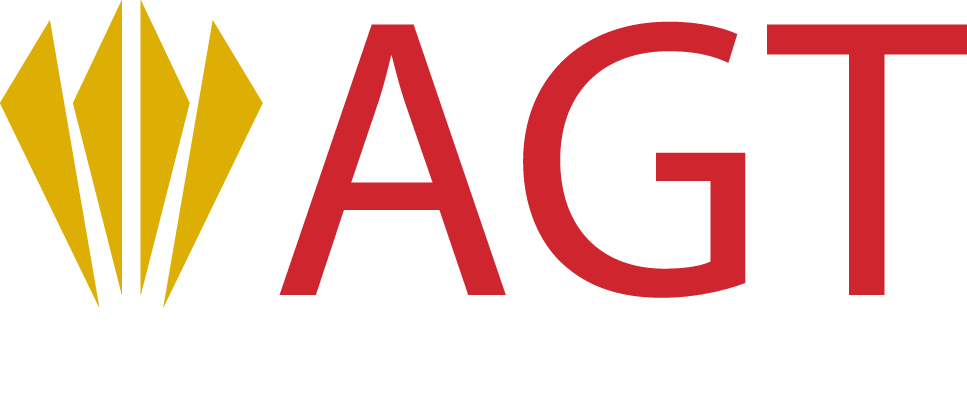AGT Newsroom

Company News
Investor News
News Archive

company
March 25, 2025
Finger on the pulse: Lentil King of Saskatchewan has plenty of ideas on how fix Canada’s trade woes
Link to Globe and Mail (For Subscribers)
In times of stress and change, it helps to hear from someone with experience. Someone who has weathered similar trials and come out ahead. For us, that’s Murad Al-Katib, CEO of AGT Foods and Ingredients, otherwise known as the “Lentil King of Saskatchewan.” Once a trade officer in the government of Roy Romanow, Al-Katib quit his job in 2001, when his wife was pregnant with twins. He started a business in his basement and eventually scaled it to one generating $3.5 billion in revenue. Today, AGT employs about 3,600 people around the world and exports to more than 120 countries, and Al-Katib is a sought-after speaker who advises exporting companies across Canada on how to compete and thrive. Tariffs? Trade restrictions? Whatever the U.S. is dishing out, Al-Katib has survived worse. Now he has thoughts on what governments and industries must do to turn this crisis into an opportunity. Al-Katib spoke to us in February, from AGT’s head office in Regina.
We’re going to talk a lot about tariffs and trade, but let me start with this: Federated Cooperatives recently announced it was pausing two major projects: a renewable diesel facility and a canola crush facility in which AGT was a partner. What drove that decision? Was it the U.S. turn away from renewable fuels?
There were two major factors. One is, the overall construction costs in Western Canada have really escalated, and not at the pace of inflation. While inflation was running 6% or 8% at its peak, construction costs are up 40% to 60%, particularly in the relative boom economies of Saskatchewan and Alberta. The other factor is just what you said. U.S. policy shifts have been quite dramatic. Under the Biden administration, the Inflation Reduction Act was a game-changer. In the U.S., renewable fuel projects of our size were attracting billions of dollars in federal subsidies. And the Canadian government did not respond. We expected that Canada’s clean fuels policy would become much more clear. In the absence of a specific response to the IRA, we expected a renewable fuels tax credit. We expected, with the Canada Growth Fund and other initiatives, that there would be exploratory discussions on things like contract for difference to ensure that the public policy mandate in Canada was consistent, for private capital to flow to large, mega projects. None of those things happened. Then you have the Trump administration elected, with a drill-baby-drill versus a clean fuels focus, and even the political landscape in Canada blowing political change. All of these political factors were very material in the decision.
Now, on the subject of the day, how do you view the tariff threat to the Canadian agriculture industry?
Protectionism of U.S. domestic agriculture as a policy has been present and prevalent in successive U.S. administrations, no matter the political stripe. Tariffs, the FDA and border issues—these have all been challenges for Canadian manufacturers over the past couple of decades. I have to remind Canadians that country-of-origin labelling was an Obama policy. Canadian agricultural exports have a strong reliance on the U.S. market. But reciprocally, the U.S. food system has a strong reliance on Canadian products. The livestock grown in Canada is largely slaughtered in the U.S. The canola that’s crushed in Canada is largely going into U.S. oil fryers. Durum wheat from Canada is going into pasta all over the U.S. And canola meal is going into the dairy industry in California. There’s an integration that I think will ease the tension, because food inflation has to be a paramount consideration in the U.S. affordability agenda. So we have optimism that the tariff threats will ultimately be eased in areas of common interest. Food and energy security, in my mind, will be the two areas where we’ll have breaks quickest, if not a complete resolution.
A lot of what you’re saying depends on logic and rationality prevailing, but I don’t know that we can count on that. What are you doing to prepare for irrational action by the U.S. government?
We took steps to insulate AGT by investing in a major food-ingredients manufacturing facility in Minot, N.D., for our business focused on the U.S. market. So our U.S. manufacturing will go up, and our Canadian manufacturing will be exported. We already have a natural level of insulation, because only 5% of my exports are into the U.S. The Middle East region is key for us, because it’s a food-security-deficit region. India is an incredibly dynamic opportunity, and one we believe is going to be a major part of the focus of Canada as we go forward. I mean, we need a balance on China risk, as well. The U.S. and China are important markets, don’t get me wrong. But we have to be looking outside of those markets that are likely to be entangled in the geopolitical world-order battle that’s going to continue over the next two decades.
You have previous experience with a major tariff challenge. In 2017, India slapped 30% tariffs on lentil imports, right?
It was even more. It was 30% on lentils, 44% on chickpeas and 66% on peas.
And India was one of your prime markets. How’d you get through it?
Going from zero tariffs to devastating tariffs with no warning—that was a very difficult period for the global pulse industry. What we had to do was develop other markets. North Africa and the Middle East were a strong focus. We’ve put in a lot of effort to continue to develop those market outlets. India will once again participate in tariffs as part of its agricultural policy. But that shouldn’t surprise us. Governments have a strong challenge on their hands in agriculture. They want to protect domestic farmers, yet they want to balance food insecurity and inflation. So around the world, we see policies that are more defensive at certain periods of the year. In emerging markets, tariffs and quotas and duties are normal during times where they’re harvesting major crops. And then they’re eased to allow imports to ensure the availability of key staple items. We’re expecting this to be the norm, which is why companies need to have size. We need to be nimble and able to pivot. We need to recognize the seasonality of different markets. As a nation, we need to develop a different level of sophistication as we start to diversify and build more sustainable long-term exports.
What can governments do to help the agriculture industry adapt?
For my entire career of 30 years, we’ve been battling with inter-provincial trade barriers. Finally I have optimism this could be the slap in the face that we needed to actually solve our own internal issues. The domestic agricultural industry accounts for about $145 billion a year of activity. That’s a growth segment. As we have new Canadians coming in, and as we look to buy Canadian, there’s an opportunity. And if we want to serve the consumer of the future, we need innovation. We’ve been caught in what I call the commodity ghetto for too long.
Meaning what?
Our system in Western Canada was built on centralized marketing by the Canadian Wheat Board. The idea was, grow the commodities at the highest quality and the lowest cost, and we’ll ship them where the populations are and let them process. But logistics have changed. Containerization now allows us to containerize ingredients, semi-refined products and food products. Governments have to target our trade relationships to enable us to have market access. We have to monetize the European free trade agreement. We need prosperous, mutually beneficial relationships with countries like India. We need to focus on emerging areas—Türkiye is the food corridor of that region—that are trans-shipment points to access markets. And if we’re gonna diversify, we have to develop trade infrastructure. I always say, “If I were prime minister for one day, I would invest $100 billion in trade infrastructure.”
What specific investments are you talking about?
I’m talking about the linkage of roads, rail and port infrastructure. Canada’s reputation has been that we produce among the highest-quality food in the world, but we are not as reliable in getting it to market. Part of that is weather. That’s not something governments can solve. What they can solve is reliable infrastructure and capacity. We have to get what belongs in pipes, in pipes, and what belongs on rail, on rail. Oil-by-rail is a ridiculous long-term strategy.
In addition to physical infrastructure, we need digital infrastructure. The future of our sector is tied to precision farming and our ability to increase production by using smart agriculture. Sensors, data collection, an ability to precision-place our seed, our fertilizer, our inoculants, and make decisions on when to do what, in what order, and at what magnitude, is allowing our yield curves to go straight up to the sky. Saskatchewan will produce 10 million tonnes of additional agricultural products in the next eight years. So you can’t just have a digital economy in Vancouver, Toronto, Calgary and Montreal. You also need it in rural areas where we have production.
And third, as an industry, we strongly support the right to collective bargaining. But when I look at the collaborative labour relations models in Europe, we need to get back to those kinds of fundamentals. We can’t have a labour disruption at the ports and the railways and the airlines every two months. That’s gonna cripple the national infrastructure.
You were a trade officer. What did that experience tell you about government’s ability to achieve these things?
Our export credit agency, EDC, is the most competitive in the world. Our trade commissioner service is effective. What we need is a true strategy on bilateral agreements. For too long, Canada has been about exporting. We have to realize that countries also want us to import. They want us to invest in their country, and they want to invest in our country.
You have a reputation for moving quickly. What should Canada be doing right now?
We need to have a plan. People have shied away from words like “industrial strategy.” We have to get back to getting projects done. Capital is mobile, right? People look at the return on capital, and if you have a two- or three-year delay on a project, the internal rate of return is decimated. I want a Canada that is predictable for investors. And we have to be a competitive jurisdiction. All around the world, we see regimes lowering corporate taxes, and they’re collecting more money than if they were increasing them. I’m a strong advocate of tax credit policies. Those of us who are making money need to be incentivized to keep reinvesting. Tax credits are very, very important.
We have oceans between us and Asia and Europe. How do we improve our ability to transport to these distant markets?
Remember, the internal is the biggest aspect of our cost. Once we get it to a port, the transit of containers and bulk vessels is a very transparent commodity freight market. We’re a backhaul, Trevor. The big haul for the steamship lines is Asian goods to North American markets.
When you say a “backhaul,” what does that mean?
It means that the containers and freight units come in full of Asian consumer goods, and then we ship them back to Asia with agri or other products. Nothing works if things go empty. That’s an opportunity. As an example, we spent $35 million building an inland container terminal in Regina, because we’re among the world’s largest containerized shippers. Containers were coming into Chicago, Detroit and Toronto, and going back to Asia empty. Now we stop those in Melville, Sask., shuttle them to Regina, fill them with agri products, and ship them back to Asia, full. Those are backhauls. A big part of our strategy has been understanding global trade flows, containerization, trans-shipments, inter-geographical trucking. You gotta optimize how you move your products, ‘cause freight is such a big cost. We have to get more plugged in. It’s a trade imperative.
How hopeful or pessimistic are you that in four or five years, Canada will be okay?
I’m optimistic. We have to make moves. There are sectors that are going to suffer. We can’t save something that fundamentally doesn’t have the economic ability to respond to the new world order. Those sectors that have this competitive advantage, we have to monetize them in a much better way. When I talk about Saskatchewan producing 10 million more tonnes, I don’t want to just put that on a vessel and ship it. I want to do something with one or two or three million of those tonnes, and I want to create jobs right here.
Trevor ColeSpecial to The Globe and Mail
In times of stress and change, it helps to hear from someone with experience. Someone who has weathered similar trials and come out ahead. For us, that’s Murad Al-Katib, CEO of AGT Foods and Ingredients, otherwise known as the “Lentil King of Saskatchewan.” Once a trade officer in the government of Roy Romanow, Al-Katib quit his job in 2001, when his wife was pregnant with twins. He started a business in his basement and eventually scaled it to one generating $3.5 billion in revenue. Today, AGT employs about 3,600 people around the world and exports to more than 120 countries, and Al-Katib is a sought-after speaker who advises exporting companies across Canada on how to compete and thrive. Tariffs? Trade restrictions? Whatever the U.S. is dishing out, Al-Katib has survived worse. Now he has thoughts on what governments and industries must do to turn this crisis into an opportunity. Al-Katib spoke to us in February, from AGT’s head office in Regina.
We’re going to talk a lot about tariffs and trade, but let me start with this: Federated Cooperatives recently announced it was pausing two major projects: a renewable diesel facility and a canola crush facility in which AGT was a partner. What drove that decision? Was it the U.S. turn away from renewable fuels?
There were two major factors. One is, the overall construction costs in Western Canada have really escalated, and not at the pace of inflation. While inflation was running 6% or 8% at its peak, construction costs are up 40% to 60%, particularly in the relative boom economies of Saskatchewan and Alberta. The other factor is just what you said. U.S. policy shifts have been quite dramatic. Under the Biden administration, the Inflation Reduction Act was a game-changer. In the U.S., renewable fuel projects of our size were attracting billions of dollars in federal subsidies. And the Canadian government did not respond. We expected that Canada’s clean fuels policy would become much more clear. In the absence of a specific response to the IRA, we expected a renewable fuels tax credit. We expected, with the Canada Growth Fund and other initiatives, that there would be exploratory discussions on things like contract for difference to ensure that the public policy mandate in Canada was consistent, for private capital to flow to large, mega projects. None of those things happened. Then you have the Trump administration elected, with a drill-baby-drill versus a clean fuels focus, and even the political landscape in Canada blowing political change. All of these political factors were very material in the decision.
Now, on the subject of the day, how do you view the tariff threat to the Canadian agriculture industry?
Protectionism of U.S. domestic agriculture as a policy has been present and prevalent in successive U.S. administrations, no matter the political stripe. Tariffs, the FDA and border issues—these have all been challenges for Canadian manufacturers over the past couple of decades. I have to remind Canadians that country-of-origin labelling was an Obama policy. Canadian agricultural exports have a strong reliance on the U.S. market. But reciprocally, the U.S. food system has a strong reliance on Canadian products. The livestock grown in Canada is largely slaughtered in the U.S. The canola that’s crushed in Canada is largely going into U.S. oil fryers. Durum wheat from Canada is going into pasta all over the U.S. And canola meal is going into the dairy industry in California. There’s an integration that I think will ease the tension, because food inflation has to be a paramount consideration in the U.S. affordability agenda. So we have optimism that the tariff threats will ultimately be eased in areas of common interest. Food and energy security, in my mind, will be the two areas where we’ll have breaks quickest, if not a complete resolution.
A lot of what you’re saying depends on logic and rationality prevailing, but I don’t know that we can count on that. What are you doing to prepare for irrational action by the U.S. government?
We took steps to insulate AGT by investing in a major food-ingredients manufacturing facility in Minot, N.D., for our business focused on the U.S. market. So our U.S. manufacturing will go up, and our Canadian manufacturing will be exported. We already have a natural level of insulation, because only 5% of my exports are into the U.S. The Middle East region is key for us, because it’s a food-security-deficit region. India is an incredibly dynamic opportunity, and one we believe is going to be a major part of the focus of Canada as we go forward. I mean, we need a balance on China risk, as well. The U.S. and China are important markets, don’t get me wrong. But we have to be looking outside of those markets that are likely to be entangled in the geopolitical world-order battle that’s going to continue over the next two decades.
You have previous experience with a major tariff challenge. In 2017, India slapped 30% tariffs on lentil imports, right?
It was even more. It was 30% on lentils, 44% on chickpeas and 66% on peas.
And India was one of your prime markets. How’d you get through it?
Going from zero tariffs to devastating tariffs with no warning—that was a very difficult period for the global pulse industry. What we had to do was develop other markets. North Africa and the Middle East were a strong focus. We’ve put in a lot of effort to continue to develop those market outlets. India will once again participate in tariffs as part of its agricultural policy. But that shouldn’t surprise us. Governments have a strong challenge on their hands in agriculture. They want to protect domestic farmers, yet they want to balance food insecurity and inflation. So around the world, we see policies that are more defensive at certain periods of the year. In emerging markets, tariffs and quotas and duties are normal during times where they’re harvesting major crops. And then they’re eased to allow imports to ensure the availability of key staple items. We’re expecting this to be the norm, which is why companies need to have size. We need to be nimble and able to pivot. We need to recognize the seasonality of different markets. As a nation, we need to develop a different level of sophistication as we start to diversify and build more sustainable long-term exports.
What can governments do to help the agriculture industry adapt?
For my entire career of 30 years, we’ve been battling with inter-provincial trade barriers. Finally I have optimism this could be the slap in the face that we needed to actually solve our own internal issues. The domestic agricultural industry accounts for about $145 billion a year of activity. That’s a growth segment. As we have new Canadians coming in, and as we look to buy Canadian, there’s an opportunity. And if we want to serve the consumer of the future, we need innovation. We’ve been caught in what I call the commodity ghetto for too long.
Meaning what?
Our system in Western Canada was built on centralized marketing by the Canadian Wheat Board. The idea was, grow the commodities at the highest quality and the lowest cost, and we’ll ship them where the populations are and let them process. But logistics have changed. Containerization now allows us to containerize ingredients, semi-refined products and food products. Governments have to target our trade relationships to enable us to have market access. We have to monetize the European free trade agreement. We need prosperous, mutually beneficial relationships with countries like India. We need to focus on emerging areas—Türkiye is the food corridor of that region—that are trans-shipment points to access markets. And if we’re gonna diversify, we have to develop trade infrastructure. I always say, “If I were prime minister for one day, I would invest $100 billion in trade infrastructure.”
What specific investments are you talking about?
I’m talking about the linkage of roads, rail and port infrastructure. Canada’s reputation has been that we produce among the highest-quality food in the world, but we are not as reliable in getting it to market. Part of that is weather. That’s not something governments can solve. What they can solve is reliable infrastructure and capacity. We have to get what belongs in pipes, in pipes, and what belongs on rail, on rail. Oil-by-rail is a ridiculous long-term strategy.
In addition to physical infrastructure, we need digital infrastructure. The future of our sector is tied to precision farming and our ability to increase production by using smart agriculture. Sensors, data collection, an ability to precision-place our seed, our fertilizer, our inoculants, and make decisions on when to do what, in what order, and at what magnitude, is allowing our yield curves to go straight up to the sky. Saskatchewan will produce 10 million tonnes of additional agricultural products in the next eight years. So you can’t just have a digital economy in Vancouver, Toronto, Calgary and Montreal. You also need it in rural areas where we have production.
And third, as an industry, we strongly support the right to collective bargaining. But when I look at the collaborative labour relations models in Europe, we need to get back to those kinds of fundamentals. We can’t have a labour disruption at the ports and the railways and the airlines every two months. That’s gonna cripple the national infrastructure.
You were a trade officer. What did that experience tell you about government’s ability to achieve these things?
Our export credit agency, EDC, is the most competitive in the world. Our trade commissioner service is effective. What we need is a true strategy on bilateral agreements. For too long, Canada has been about exporting. We have to realize that countries also want us to import. They want us to invest in their country, and they want to invest in our country.
You have a reputation for moving quickly. What should Canada be doing right now?
We need to have a plan. People have shied away from words like “industrial strategy.” We have to get back to getting projects done. Capital is mobile, right? People look at the return on capital, and if you have a two- or three-year delay on a project, the internal rate of return is decimated. I want a Canada that is predictable for investors. And we have to be a competitive jurisdiction. All around the world, we see regimes lowering corporate taxes, and they’re collecting more money than if they were increasing them. I’m a strong advocate of tax credit policies. Those of us who are making money need to be incentivized to keep reinvesting. Tax credits are very, very important.
We have oceans between us and Asia and Europe. How do we improve our ability to transport to these distant markets?
Remember, the internal is the biggest aspect of our cost. Once we get it to a port, the transit of containers and bulk vessels is a very transparent commodity freight market. We’re a backhaul, Trevor. The big haul for the steamship lines is Asian goods to North American markets.
When you say a “backhaul,” what does that mean?
It means that the containers and freight units come in full of Asian consumer goods, and then we ship them back to Asia with agri or other products. Nothing works if things go empty. That’s an opportunity. As an example, we spent $35 million building an inland container terminal in Regina, because we’re among the world’s largest containerized shippers. Containers were coming into Chicago, Detroit and Toronto, and going back to Asia empty. Now we stop those in Melville, Sask., shuttle them to Regina, fill them with agri products, and ship them back to Asia, full. Those are backhauls. A big part of our strategy has been understanding global trade flows, containerization, trans-shipments, inter-geographical trucking. You gotta optimize how you move your products, ‘cause freight is such a big cost. We have to get more plugged in. It’s a trade imperative.
How hopeful or pessimistic are you that in four or five years, Canada will be okay?
I’m optimistic. We have to make moves. There are sectors that are going to suffer. We can’t save something that fundamentally doesn’t have the economic ability to respond to the new world order. Those sectors that have this competitive advantage, we have to monetize them in a much better way. When I talk about Saskatchewan producing 10 million more tonnes, I don’t want to just put that on a vessel and ship it. I want to do something with one or two or three million of those tonnes, and I want to create jobs right here.
Trevor ColeSpecial to The Globe and Mail
company
September 21, 2024
Saskatchewan Business Leaders Shine at the 2024 ABEX Awards Gala
company
September 16, 2024
AGT Foods New Pasta Extrusion Center in Minot Earns Statewide Economic Development Award
company
July 23, 2024
AGT Offers Look Inside New Pasta Plant
company
October 19, 2023
How a first generation Sask resident helped end summer fallow
SEE MORE
COMPANIES IN OUR GROUP
Contact Us
Head Office
6200 E. Primrose Green Dr.
Regina, SK, Canada
S4V 3L7
Corporate Resources
Copyright © 2025 AGT Food and Ingredients Inc.











